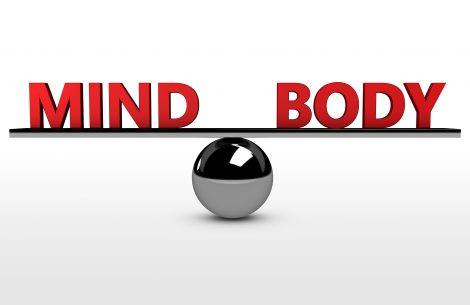In 1977, professor of medicine Kenneth Pelletier, M.D. wrote Mind as Healer, Mind as Slayer in which he discussed the mind and body connection. Dr. Pelletier’s current research focuses on genes and how they can change. He and other genetic researchers say gene expression is influenced by what we think and do. In the West, he was a pioneer of the mind-body concept, and since then much research backs up his original premise.
In Traditional Chinese Medicine, Ayurveda, and Buddhist psychology, the concept that mind affects health and healing has been an established belief. The extent to which the mind can affect the body is seen in Tibetan monks with advanced meditation skills who can slow their heart rate, brain waves, metabolism, and raise or lower their body temperature.
Although, there are still many conventional doctors who don’t understand it there are many who do advocate the power of the mind over the body. One of these is Mark Hyman, M.D. who says that the connections between mind and body are more than a link. He says it’s a “one bidirectional system.”
The placebo effect is a good example of how the mind can influence well-being. The placebo effect refers to giving a person (usually in a research setting) a sugar pill instead of prescription medicine. In approximately 30 percent of the time, the placebo group has a positive reaction. It’s the person’s mental expectation that the “medicine” will make them well that makes it work.
‘“The modern physician should know as much about emotions and thoughts as about disease symptoms and drugs. This approach would appear to hold more promise of cure than anything medicine has given us to date.”’[1] –
Hans Selye, M.D, the doctor who coined the word, “stress.”
The Biological Connection Between Emotions, Thoughts, and the Body
Thoughts and emotions create neuropeptide protein molecules. The neuropeptides communicate with one another and influence the brain and the body. Studies show that certain parts of the brain light up depending on the thought. For example, research shows that practicing gratitude increases dopamine, a reward neurotransmitter.
The peptides flow through the body connecting with receptors that change cell structure. When cells divide, the new cell will have more of the receptors that match the peptide that is most predominant.
In other words, you are programming your cells with whatever you’re thinking of most. These interactions between peptides and cells, in turn, influence your genes. Thoughts and emotions can affect what genes are turned on or off. So in this way, thoughts and feelings can change the body.
How to Develop Mind-Body Healing
Lissa Rankin M.D., a researcher in the mind-body healing paradigm and author of Mind Over Medicine says that that love, support, and positive belief can go beyond healing and can cure illnesses.
According to Dr. Hyman and Dr. Deepak Chopra, a calm mind leads to healing and being healthy. Both Dr. Hyman and Dr. Chopra say meditation is a key influencer in the mind-body connection. Mindfulness and other meditation methods connect you with the mind-body system through awareness, reflection, and observation.
Here are other mind-body techniques shown to improve health:
Cognitive Behavioral Therapy
CBT is a short-term psychotherapy that teaches the patient to modify their thinking. The way a person perceives a situation is worse than the situation, forming the basis of CBT.
Biofeedback
With the aid of electrical sensors adhered to the skin, biological changes in the body are observed while going into deep states of relaxation. The patient learns mental strategies to control heart rate, muscle tension, blood pressure, etc.
Hypnosis
Hypnosis put you in a very relaxed trance-like state where you can use the power of suggestion to improve health and mental attitude, relieve pain, break bad habits, etc. There is a false perception that you give up complete control under hypnosis to the hypnotherapist. When under hypnosis, you have full control of your mind and body.
Yoga
Styles of yoga that focus on the mind and body connection can make you aware of subtle energy and “inner workings” of your body. A mind-body yoga session would include body scanning and meditation. Yoga Nidra is a style of yoga that focuses on deep relaxation and the inner body.
Guided Imagery
A form of meditation, guided imagery, uses your senses to guide you into deep relaxation where you can visualize wellness and healing.
Emotional Freedom Technique (EFT)
EFT is a form of psychological acupuncture. Kinetic energy is transferred to specific meridians on the head and chest to “short-circuit” emotional blocks through acupressure and affirmations.
Connecting to the body through mindful, positive techniques create a favorable environment for the body to be healthy and to heal. Your mindset is a powerful tool that can influence many aspects of your life including your health.
References:
- Chopra, Deepak. Can positive thinking make you well? (December 5, 2011). Retrieved from https://www.cnn.com/2011/12/05/health/positive-thinking-deepak-chopra/index.html?hpt=hp_t2.
- Hampton, Debbie. How Your Thought Change Your Brain, Cells, and Genes (March 23, 2016). Retrieved from https://www.huffingtonpost.com/debbie-hampton/how-your-thoughts-change-your-brain-cells-and-genes_b_9516176.html.
- Hyman, Mark. Stress Tips: Calm Your Mind, Heal Your Body. Retrieved from http://drhyman.com/blog/2010/05/19/stress-tips-calm-your-mind-heal-your-body/.
- Mercola, Dr. 13 Mind-body Techniques That Can Help Ease Pain and Depression (July 4, 2013). Retrieved from https://articles.mercola.com/sites/articles/archive/2013/07/04/13-mind-body-techniques.asp
- Pelletier, Kenneth R, Dr. Change Your Genes, Change Your Life. Retrieved from http://drpelletier.com/.
- Hyman, Mark. Stress Tips: Calm Your Mind, Heal Your Body. Web.

